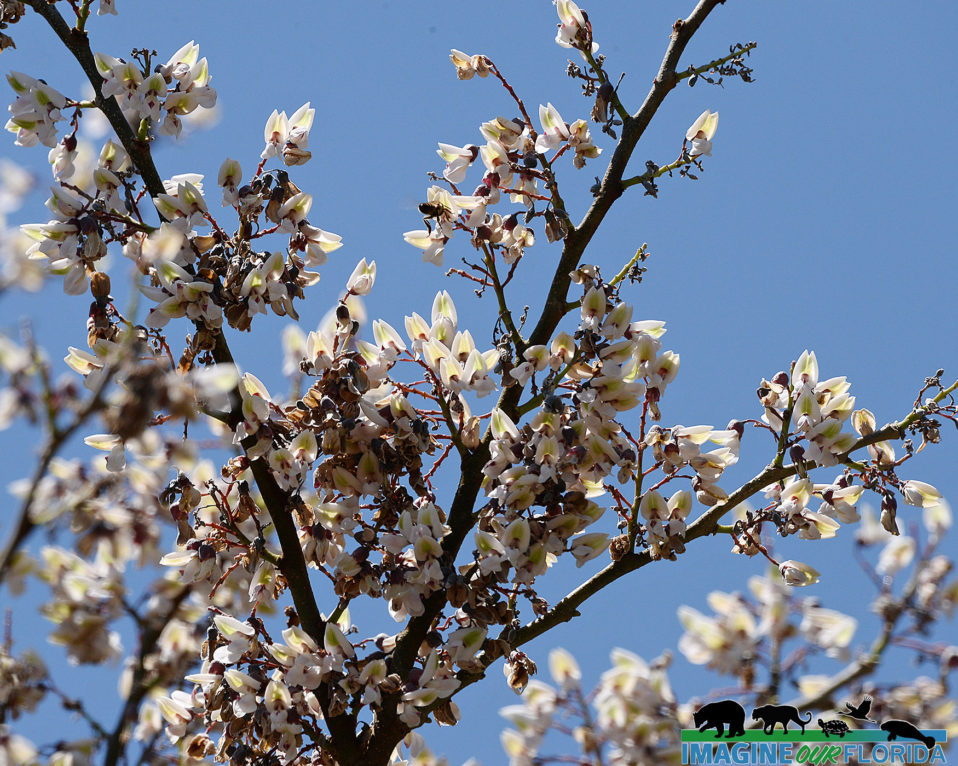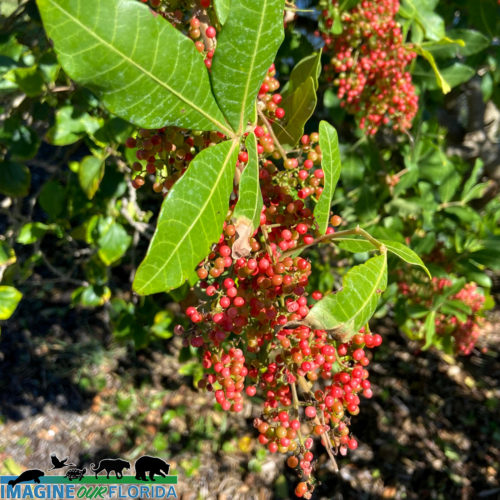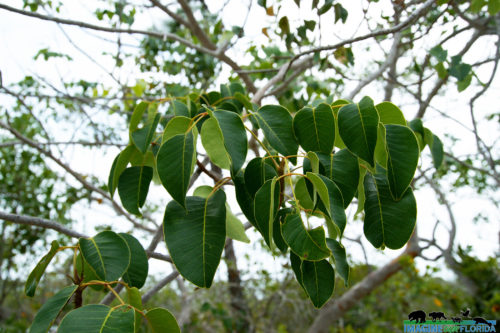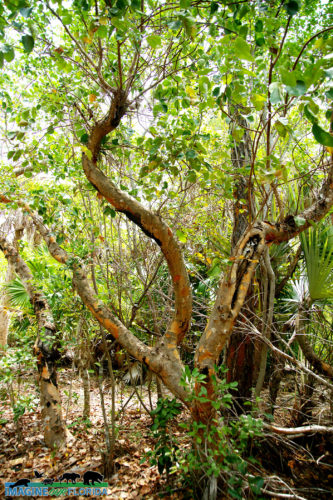Royal Poinciana
Jamaican Dogwood


Brazillian Peppertree
Poisonwood Tree
American Sycamore
The American sycamore, Platanus occidentalis, is a beautiful tree that grows 100 – 170 feet tall with a diameter of 3-14 feet. Its bark is white at first but turns brown as it grows. As the tree ages, the scales fall away and reveal the whitish-green bark beneath. Its distinctive leaves and green globe-shaped fruit make it easy to recognize. Songbirds dine on the seeds.
Sycamore trees are native from southern Canada to northern Florida. However, the tree has been planted far south of its range in Florida. The tree pictured in these images is located at Lake Lily in Central Florida.
Sycamore trees are known for their hurricane resistance and the ability of their intertwining root system to stabilize erosion. This makes them perfect specimens to plant in parks near waterways. The trees also tolerate acidic soils and as a result, they have been planted at phosphate mining sites. Before planting this beautiful shade tree in your yard, consider the height as well as the debris from falling bark and fruit.
Photo credit: Dan Kon
Manchineel
Manchineel (Hippomane mancinella) grows in the Florida Keys and Everglades. Every part of the manchineel tree is poisonous. A milky sap oozes from this tree and its leaves. The greenish-yellow apple-like fruit is poisonous. This tree is so toxic that if a leaf brushes across your face it can cause temporary or permanent blindness. To some this tree is fatal. It is classified by the Guinness World Book of Records as the most dangerous tree in the world. When a tree is located it is marked with a warning to keep people away from it.
The Manchineel can grow as high as 50 feet. It can be found along the coast in brackish water. This tree is endangered but grows in clusters when encountered.
Its roots prevent erosion and it serves as a natural windbreak.
The Manchineel does not depend on birds and animals to spread its seeds. It drops its fruit and nearby water carries the buoyant fruit until eventually the fruit rots and it spreads its seeds.
The Manchineel is sometimes known as the beach apple. Early Spanish explorers called it, la manzanilla de la muerte, which translates to “the little apple of death,” or as Arbol de la Muerte, “tree of death.” Legend says that the tip of the arrow that killed Ponce de Leon was dipped in the sap of the Manchineel. If you ever encounter this tree do not touch it or breathe near it. Quickly move away from it.
Photo credit: Beach apple picture UF IFAS Blogs
We believe this picture was taken with a long lens camera






 lian
lian















Recent Comments